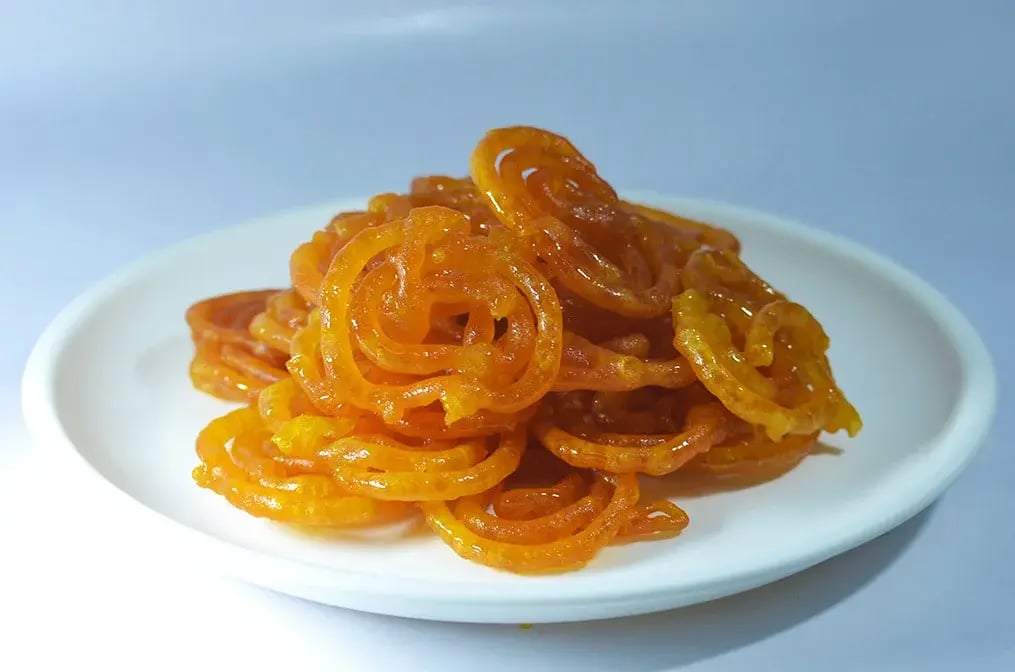Discover the unique regional recipes that celebrate Dussehra in Maharashtra. Make them at your home and enjoy the festivities together

Like all other Indian states that celebrate Navratri, several desserts are widely loved specifically as Dussehra food in Maharashtra. Maharashtrian desserts are known for their diverse ingredients which create unique flavors and textures. These sweets hold cultural significance, with treats like Modak and Puran Poli being integral to festive celebrations. Jaggery is commonly used as a natural sweetener, adding a rich flavor and health benefits. The fusion of sweet, savory, and spicy elements makes these desserts a delightful experience for the palate.
Sabudana Kheer

Ingredients:
- 50 gm sabudana (tapioca pearls)
- 3 tbsp sugar
- 240 ml water
- 240 ml milk
- ⅛ tsp cardamom powder
- 2-3 tbsp chopped nuts
- 1 tbsp soaked raisins
Instructions:
- Rinse the sabudana thoroughly, then soak it in water for a few hours or overnight to soften the pearls and reduce cooking time.
- Drain the soaked sabudana and transfer it to a pot with 240 ml of water. Cook until the pearls turn translucent.
- Pour in 240 ml of milk and let the mixture simmer, allowing the pearls to cook further until it thickens.
- Stir in the sugar and cardamom powder, mixing well. If the kheer is too thick, add a little more milk to reach your desired consistency.
- Transfer the kheer to a serving dish. In a separate pan, fry the chopped nuts and soaked raisins in ghee until golden and aromatic. Use them to garnish the kheer and enjoy it warm or chilled.
Jalebi

This is one of those all-time favorite Navratri sweets that makes an appearance in many other Hindu religious celebrations, including Dussehra. Different communities consume Jalebi differently. For example, parts of Bengal and eastern India have Jalebi as is, while many northern and western Indian states prefer a side of cold Rabri with the piping hot jalebis.
Ingredients:
- 200 gm plain flour
- 95 gm gram flour
- 55 gm yeast
- 500 ml water
- 190 gm sugar
- 80 gm ghee
- Whipped cream
- Dark chocolate shavings
Method:
- You have to combine yeast, water, and the different flour until a loose batter is formed.
- Then, you need to transfer this into a piping bag, and pipe it into circular shapes on top of hot oil which is at least 180°C in temperature.
- You must let these rings fry for at least three to four minutes.
- To make the sugar syrup for the jalebi, make a thick concoction of sugar and water, and soak the jalebis in them for at least 10 minutes.
- Serve them with whipped cream and dark chocolate shavings for an unexpected, modern twist.
Sweet Chivda Recipe

This traditional poha recipe is a must-have in Maharastrian homes. Serve it to guests or store and have for personal indulgence.
Ingredients:
- 200 gm poha
- 50 gm jaggery
- 30 gm ghee
- 20 gm chopped nuts (cashews, almonds, or peanuts)
- 10 gm dried coconut
- ½ tsp cardamom powder
- A pinch of salt
- A handful of raisins
Instructions:
- Lightly roast the flattened rice (poha) in a pan over low heat until it becomes crisp. Be careful not to burn it. Remove from heat and set aside.
- In the same pan, add ghee and let it melt. Add the grated jaggery and a splash of water. Stir until the jaggery dissolves completely and forms a syrup.
- Add the roasted poha to the jaggery syrup, mixing well to ensure the poha is evenly coated. Stir in the chopped nuts, grated coconut (if using), cardamom powder, and a pinch of salt.
- Toss the raisins in now and mix everything thoroughly.
- Spread the sweet chivda on a plate to cool down. Once cooled, it will become crunchy. Store it in an airtight container and enjoy it as a delightful snack or festive treat!
When making any of these sweets, keep in mind that there are numerous variants of Indian desserts & sweets that are traditionally enjoyed in Maharashtrian cuisine during Navratri. The recipes mentioned are just a few among the many delectable sweetmeats you can explore. If you’re looking to satisfy your sweet cravings even more, consider indulging in dishes like Basundi, Amba Poli, and Gavhale Kheer throughout the festive days.
Like This Article?
More Like This




Popular Articles





Trending Web Stories
Curated Recipes


















